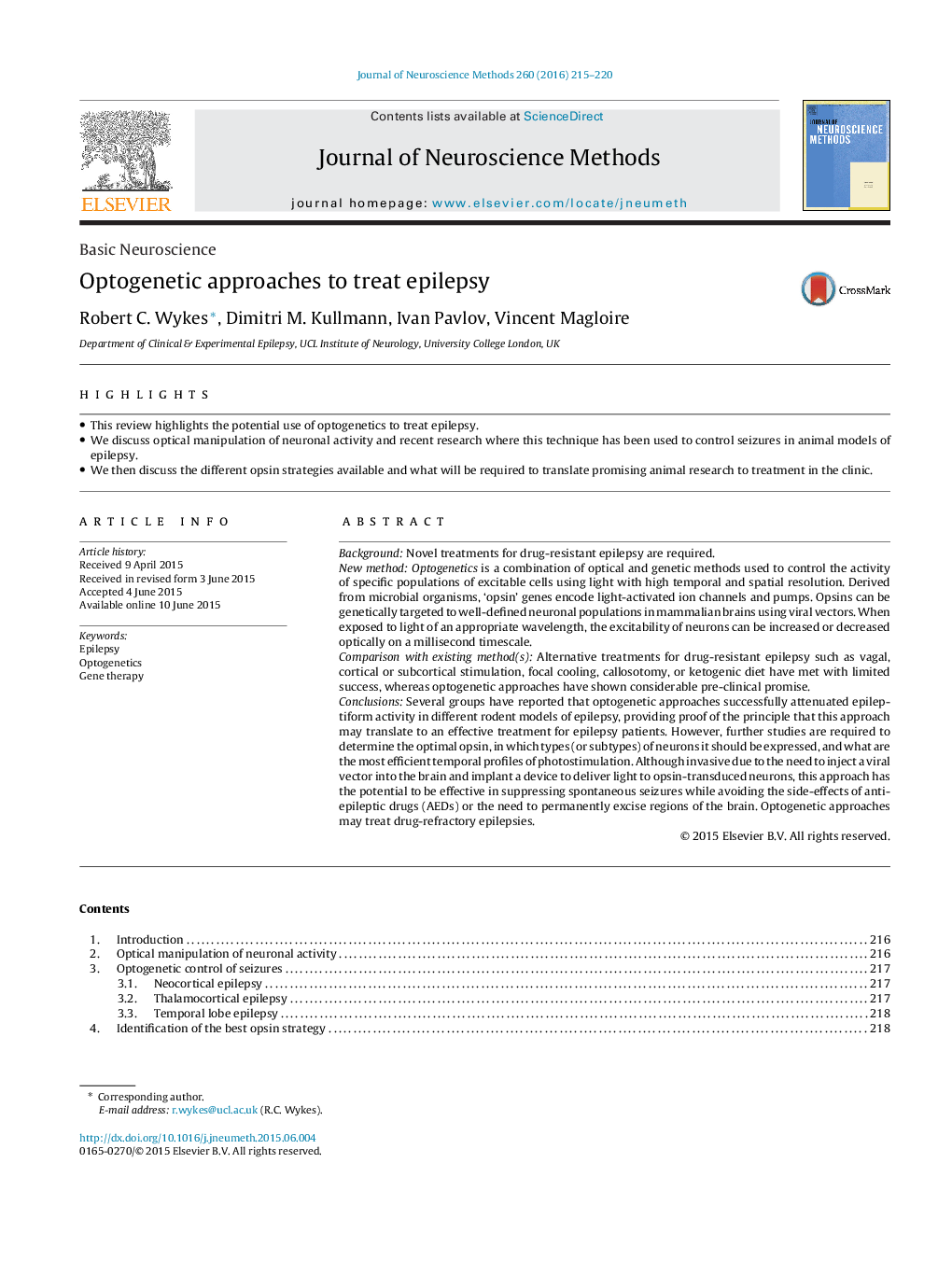| کد مقاله | کد نشریه | سال انتشار | مقاله انگلیسی | نسخه تمام متن |
|---|---|---|---|---|
| 6267976 | 1614609 | 2016 | 6 صفحه PDF | دانلود رایگان |
- This review highlights the potential use of optogenetics to treat epilepsy.
- We discuss optical manipulation of neuronal activity and recent research where this technique has been used to control seizures in animal models of epilepsy.
- We then discuss the different opsin strategies available and what will be required to translate promising animal research to treatment in the clinic.
BackgroundNovel treatments for drug-resistant epilepsy are required.New methodOptogenetics is a combination of optical and genetic methods used to control the activity of specific populations of excitable cells using light with high temporal and spatial resolution. Derived from microbial organisms, 'opsin' genes encode light-activated ion channels and pumps. Opsins can be genetically targeted to well-defined neuronal populations in mammalian brains using viral vectors. When exposed to light of an appropriate wavelength, the excitability of neurons can be increased or decreased optically on a millisecond timescale.Comparison with existing method(s)Alternative treatments for drug-resistant epilepsy such as vagal, cortical or subcortical stimulation, focal cooling, callosotomy, or ketogenic diet have met with limited success, whereas optogenetic approaches have shown considerable pre-clinical promise.ConclusionsSeveral groups have reported that optogenetic approaches successfully attenuated epileptiform activity in different rodent models of epilepsy, providing proof of the principle that this approach may translate to an effective treatment for epilepsy patients. However, further studies are required to determine the optimal opsin, in which types (or subtypes) of neurons it should be expressed, and what are the most efficient temporal profiles of photostimulation. Although invasive due to the need to inject a viral vector into the brain and implant a device to deliver light to opsin-transduced neurons, this approach has the potential to be effective in suppressing spontaneous seizures while avoiding the side-effects of anti-epileptic drugs (AEDs) or the need to permanently excise regions of the brain. Optogenetic approaches may treat drug-refractory epilepsies.
Journal: Journal of Neuroscience Methods - Volume 260, 15 February 2016, Pages 215-220
